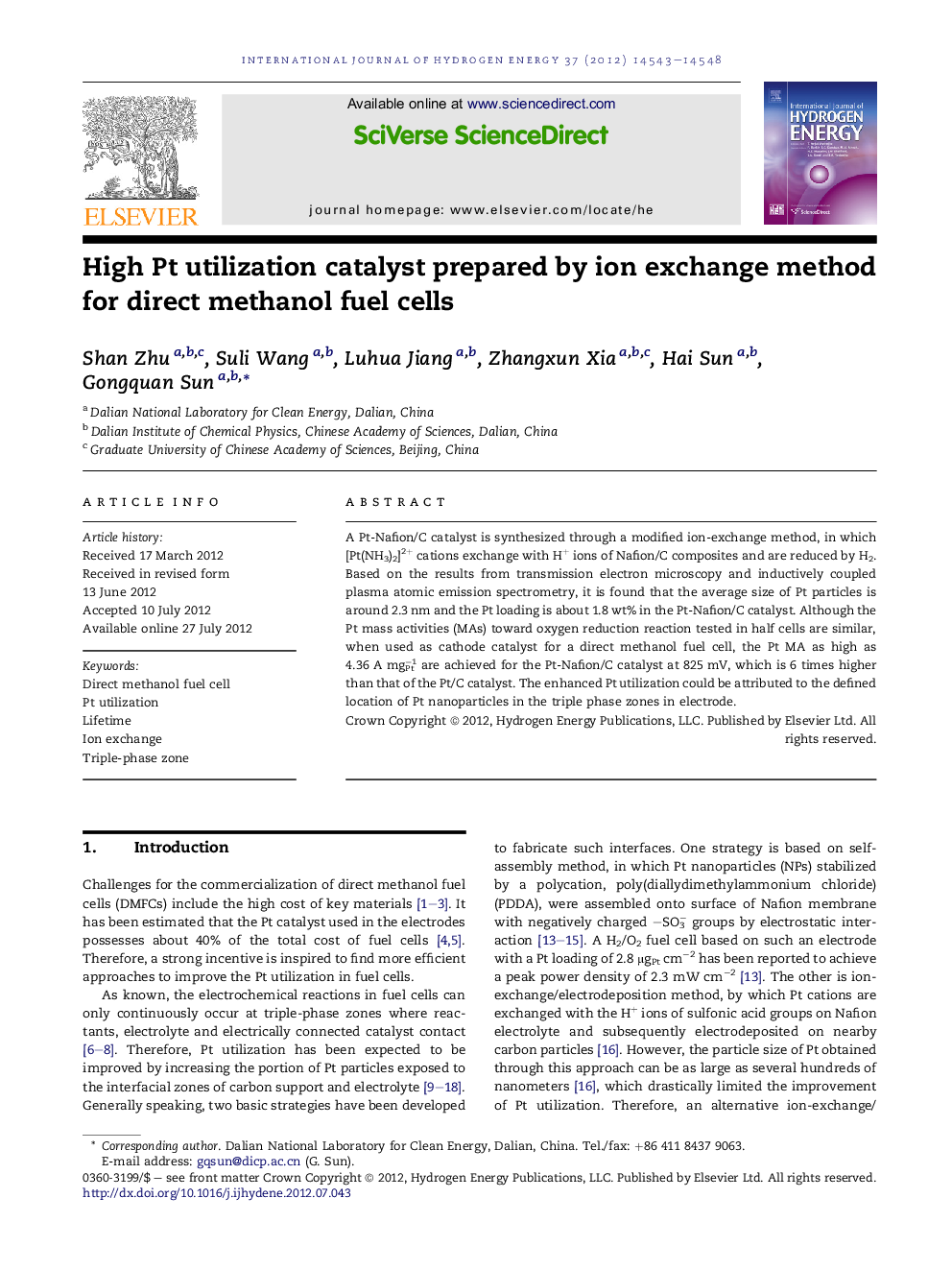| Article ID | Journal | Published Year | Pages | File Type |
|---|---|---|---|---|
| 1274802 | International Journal of Hydrogen Energy | 2012 | 6 Pages |
A Pt-Nafion/C catalyst is synthesized through a modified ion-exchange method, in which [Pt(NH3)2]2+ cations exchange with H+ ions of Nafion/C composites and are reduced by H2. Based on the results from transmission electron microscopy and inductively coupled plasma atomic emission spectrometry, it is found that the average size of Pt particles is around 2.3 nm and the Pt loading is about 1.8 wt% in the Pt-Nafion/C catalyst. Although the Pt mass activities (MAs) toward oxygen reduction reaction tested in half cells are similar, when used as cathode catalyst for a direct methanol fuel cell, the Pt MA as high as 4.36 A mgPt−1 are achieved for the Pt-Nafion/C catalyst at 825 mV, which is 6 times higher than that of the Pt/C catalyst. The enhanced Pt utilization could be attributed to the defined location of Pt nanoparticles in the triple phase zones in electrode.
► Pt is deposited on the interfacial zones of electron conductor and proton conductor. ► In DMFC, Pt mass activity of this catalyst is 10-fold higher than a commercial Pt/C. ► Provide an approach to enhance the Pt utilization in fuel cells.
